Decorative Waterproof Plaster - effective finish
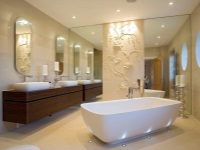
Despite the huge variety of modern methods of interior wall finishing, including in the bathroom, the best option is still the use of decorative moisture-resistant plaster.
Moisture-resistant plaster currently remains the most environmentally friendly and durable material, and, importantly, a fairly budget-friendly and simple option for the decorative treatment of walls. The diverse range of decorative plaster and its availability is increasingly attracting its customers.
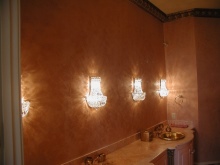
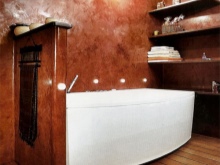
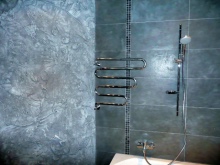
Pros of
Decorative moisture-resistant plaster for walls is a dry mixture, which includes fillers of a variety of decorative elements imitating different material - marble or granite, silk or metal, as well as special polymers that create a protective moisture-resistant layer.
Processing with such a mixture forms the basis for tiling or painting walls in damp rooms. Plaster with the addition of a color pigment can immediately serve as the finish of the surface. In some compositions, crumb from natural materials - marble and granite - is added, which creates a better imitation of the surface.
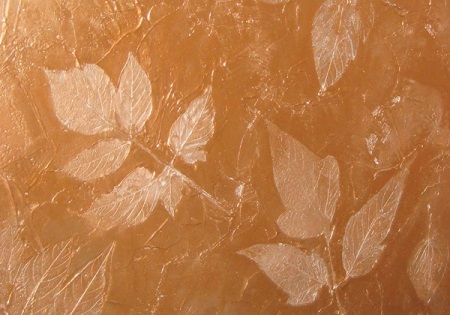
What are the main qualities of this material, which are so attractive to a lot of buyers?
- First of all, the moisture resistance and vapor permeability of the material, which prevents the appearance of fungus and mold.
- Rather simple technology of applying decorative plaster. The manufacturer always accompanies its products with detailed instructions on how to obtain a high-quality solution and how to apply it.
- Decorative plaster perfectly hides all the irregularities and cracks on the walls, creating a natural textured effect.
- Many manufacturers produce plaster mixes with properties of insulation, which perfectly cope with this function, without requiring additional insulation of the room.
- An important role in the choice is durability of this option of interior decoration, which can be compared to few modern materials.
- Many buyers are attracted by the environmental friendliness of the material. After all, the plaster composition does not contain chemical fillers, does not absorb unpleasant odors, is not toxic, fire-resistant and resistant to high humidity and temperature fluctuations.
- Another plus when choosing this finishing option is originality and aesthetics.
Even using plaster of popular classes, you can be sure that you will not find a similar design anywhere else, because in different conditions the same plaster gives different results, but in any case looks spectacular and expensive.
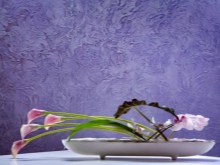
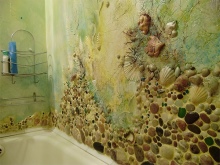
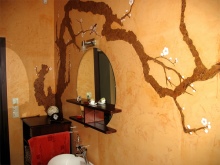
Types
Decorative plaster is a special material, because its composition contains various synthetic and natural fillers, due to which the necessary relief is created.
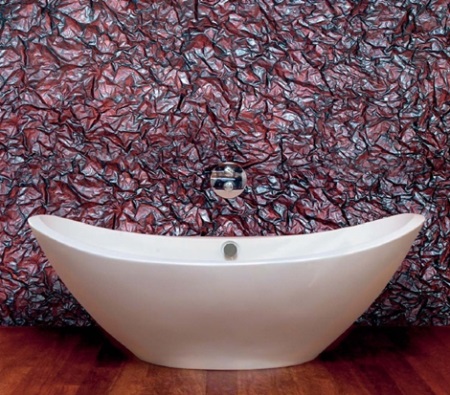
According to its composition, decorative plaster is divided into types:
- Structural plaster - Ready-made dry mix, manufactured by factory technologies. Most often this type of plaster is used in public places, where unnecessary originality is not required, such as the facades of residential buildings, walls in stairwells, corridors and so on. It is quite easy to apply structural plaster, because its main property is high plasticity, which allows you to apply shaped grooves to the surface. Usually the mixes are produced in white, but the possibility of tinting in different colors is allowed. The finished surface is well washable with water and detergents, retains its original appearance for a long time.
- Smooth plaster helps to achieve the effect of a smooth surface or silk fabric. Artistic painting of walls and ceilings, the classic finishing of walls with plaster also refers to this type of finish.
- Venetian plaster Imitates the textured surfaces, such as stone or marble, and looks quite original and expensive in classic interiors due to the shiny, glowing surface. To enhance the shimmer of the surface, craftsmen often add beeswax to the finish, which adds sophistication to the room.
- Mineral plaster Is a mixture of the main material with the addition of crumbs of granite, stone or marble. Specialists advise using mineral plaster finish in nonresidential premises, such as a hallway, bathroom, hallway. In living rooms, this material is good for decorating individual parts of the interior, which will give a unique color to the room.
- Flock coating just beginning to gain popularity among the population and is the application of colored flokov (chips) on the walls with a subsequent treatment of varnish. Flock particles look like small irregularly shaped colored flakes. Flock plaster easily hides defects on the walls, resistant to temperature and humidity fluctuations, its application will not cause difficulties.

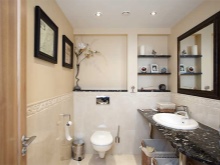
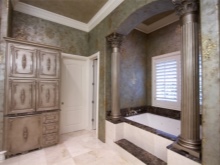
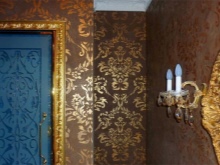

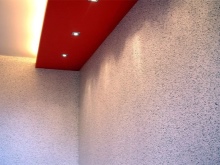
All of these decorative mixtures can safely be used for decoration of the bathroom, the most important thing - they must be waterproof!
Applying
Apply moisture-resistant decorative plaster with your own hands is quite accessible to every creative person. But you should remember that there are several mandatory rules and individual recommendations for each type of decorative plaster. It is necessary to clearly observe the sequence and technology of work with the plaster mixture according to the instructions, so that the new coating has a perfect appearance and properly served for a long time.
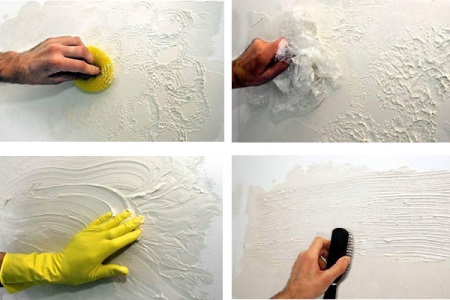
Features of application to different surfaces
The process of finishing with decorative plaster of different working surfaces has its own nuances:
- On different surfaces, the decorative plaster dries different time. For example, the fastest it dries on concrete surfaces, longer - on wooden or metal .
- Concrete walls are pre-leveled with gypsum mixture. If there are stains on the walls, it is advisable to treat them with white water emulsion paint.
- Plasterboard walls should be puttyed over the entire surface, paying special attention to the joints and corners, and creating a completely flat surface.
- Wooden walls are treated with oil paint to prevent deformation of the surfaces.
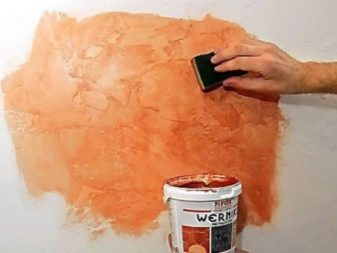
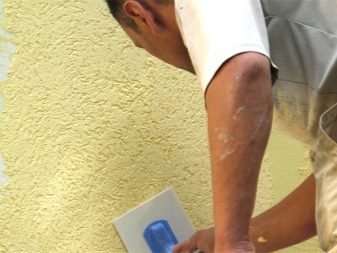
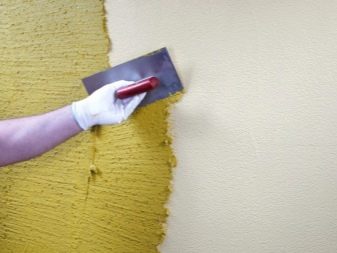
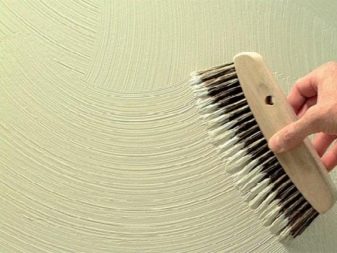
Preparation of the walls
Before independently applying decorative plaster, remember that before working with plaster mixes, it is necessary to thoroughly clean and treat the surface. The final result will depend on the quality of wall preparation. The order of preparation of the walls:
- Clean the walls of old coatings: wallpaper, paint, whitewash or plaster, scraping the surface with a trowel or sandpaper. All metal surfaces should be insulated to avoid rust.
- Cracks, chips, irregularities in the corners should be carefully sealed with gypsum mixture, and the surface should be leveled.
- Treat the walls with an acrylic primer of deep penetration two to three times, otherwise the plaster may lose its texture qualities.
- If the walls are treated in the bathroom, you must first apply a layer of waterproofing mixture, such as sanitizing plaster, then apply the primer.
- It is necessary to wait for complete drying of the primed surface, and only then you can proceed directly to the application of decorative plaster.
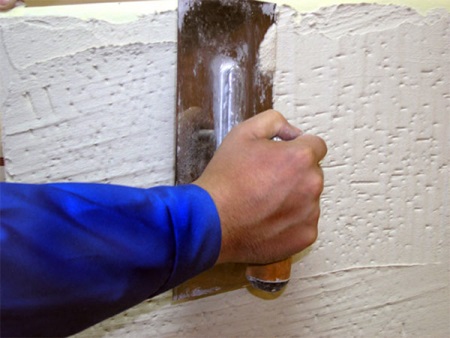
Finishing work
Each type of decorative plaster has its own technology of application, which is necessarily prescribed by the manufacturer on the package, but you can highlight some general requirements that must be observed regardless of the type of solution:
- Plaster mixture is applied only to a clean and dry surface.
- Plaster mixes should be prepared in small volumes.
- Before applying the mixture, it is necessary to test it on a small area: the solution should not be too liquid or too thick.
- It is optimal to work with a partner: one person applies plaster with a trowel an even layer of 2-3 mm and smoothes with a trowel, the second person immediately forms the decorative structure of the surface, as the mixture dries very quickly.
Care for the coating
Walls with decorative waterproof plaster are easy to clean with water and any liquid detergents.
If the wall is damaged, it can be repainted and even repainted completely. The elasticity of the material will prevent cracks and chips. Due to the fact that antibacterial agents are added to the composition of moisture-resistant plaster, the possibility of mold is eliminated, so it is sufficient to simply wipe the walls with a damp napkin from dust.
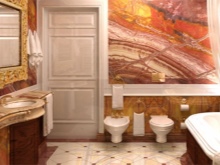
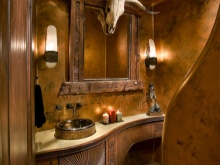
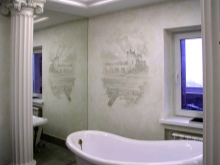





The stucco looks beautiful, but I doubt you can apply such patterns without experience.